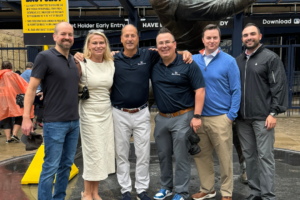In general, securing patent rights in your inventions can give you a competitive advantage in your industry and can make your company more attractive to potential investors or purchasers.
Patent Basics
A patent is a right granted by the government to an inventor to exclude all others from making, using, or selling their invention for a period of twenty (20) years. In exchange for this right to exclude, the inventor must provide full and complete disclosure of the invention – this is contained within the various sections of the issued patent document itself (specification, drawings, claims, and file history). In order to get a patent on your invention, it must be novel, non-obvious, and useful. Also, an invention cannot simply be an abstract idea or a law of nature.
There are three types of patent protection available:
- Utility Patents – these make up the bulk of all patents
- Design Patents – these cover the unique, non-functional design aspects of a product
- Plant Patents – these cover plants, of course
As an emerging business, there are several things you should consider if your company plans on making, using, or selling products that may be eligible for, or covered by, patent protection:
Do you have an invention game plan in place?
Filing for and getting patent protection is a very detailed process and is not done in the spur of the moment or on a whim. Companies that have technology they would like to protect should have a plan in place to make sure that each step of the process is done correctly. Consulting with an attorney can certainly help, but in general, any such plan should consider the following: identifying the inventors and their specific contributions, describing the problem the invention is trying to solve and documenting how the invention solves that problem, and identifying and distinguishing any “prior art” or other products that describe or attempt to solve the problem in a similar manner.
Has the invention been disclosed to the public?
Ideally, you should file for patent protection before you disclose your invention to the public. Otherwise, the disclosure of the invention can serve as “prior art” and can impede your ability to show that the invention is novel. In the United States (and a few other countries), there is a grace period allowing an inventor to file within twelve (12) months of the first public disclosure without that disclosure serving as “prior art”. Therefore, if you sell, offer to sell, or disclose your invention to the public (for example, to potential investors, in a white paper, in a journal, at a trade show, or at a conference) then the clock is ticking and you must file within twelve (12) months in the United States.
Does your product potentially infringe upon someone else’s patent?
Many companies that are either aware of patents in their field and/or are concerned about the potential risks of launching a new product seek a Freedom-To-Operate (FTO) opinion from their attorney. The attorney will then search the related patents and prepare a report identifying potential issues/features that may need to be addressed (including by designing around the patents or seeking a license). If the attorney indicates there are no patents blocking access to the marketplace, then the company can also decide to file for patent protection.
Who owns the patent?
A patent is owned by the inventors listed on the patent. Moreover, a business does not automatically gain ownership rights in a patent simply because it was invented on company time by employees of the company. Such rights must be transferred in writing by an assignment agreement. Therefore, the most prudent route is to (1) have all employees sign an invention assignment agreement at the time of hire, and (2) have each employee-inventor sign a specific assignment agreement for each invention/patent.
Action Items
- Develop a plan to describe and document the invention and patenting process.
- Do not disclose the invention to the public prior to filing for patent protection. Once disclosed, file for patent protection within twelve (12) months in the United States.
- Consider whether a Freedom-to-Operate opinion makes sense for your product.
- Have each employee sign an invention assignment agreement at the time of hire, and have each employee/inventor sign an assignment agreement for each invention/patent.
- Consult with a patent attorney as early as possible to help avoid the myriad of pitfalls.
Pittsburgh Intellectual Property Attorneys
The attorneys at The Lynch Law Group have experience assisting businesses in a wide range of industries with intellectual property litigation and transactional matters. Contact Dan Lynch at dlynch@lynchlaw-group.com or (724) 776-8000 for more information about patents or other intellectual property matters.



